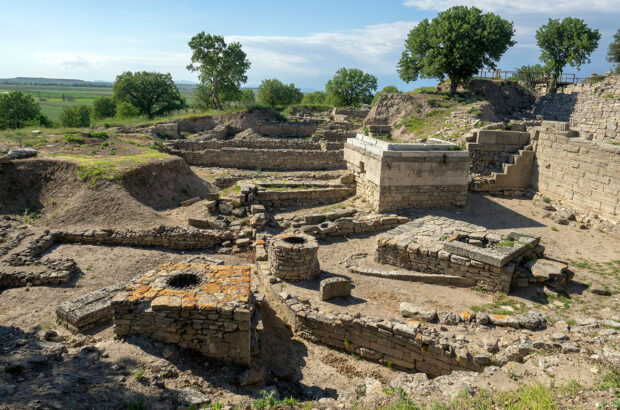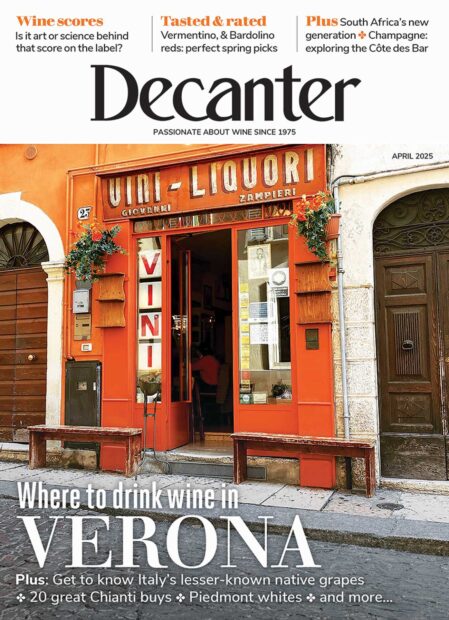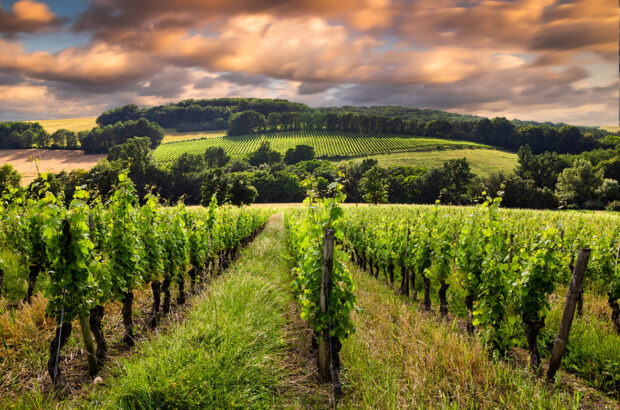Anyone who quits a highly paid job as corporate tax lawyer in Paris to take a lowly internship with Christie’s in New York is definitely someone that I am interested in sharing a glass of Champagne with, writes Jane Anson...
Champagne Brimoncourt: A rare story
Whether it’s someone that I would trust to also buy and run a new Champagne house, plus re-launch a Champagne brand, is less certain. But, after spending an hour with Alexandre Cornot, I am starting to be convinced.
Champagne Brimoncourt launched its first non-vintage wine onto the market in January 2014.
It was a name that last found itself on a label in the 1950s, and had lain dormant until Cornot – who boasts a fabulously neat Phileas Fogg moustache, perfectly polished shoes, tailored suit and an infectious smile – rescued it and dared to take a crack at what must be one of the most difficult tasks in the wine industry: to launch a new brand into the highly closed-off world of Champagne.
‘Easy to believe the cards are set in Champagne’
‘It’s easy to believe that all the cards are set within Champagne,’ Cornot agrees a little ruefully, ‘and of course a part of me found it intimidating to even try. But I couldn’t walk away from the opportunity.’
Cornot was born in Reims, where his family was in the military rather than the wine business – his grandfather in the Foreign Legion, his father the airforce, while his own career started in the navy.
There was another grandfather who graduated from Beaux Arts in Paris, so creativity was clearly always in there somewhere.
He says that moving to New York aged 30 to pursue an art career was, ‘a way to reconcile my personal interests with my professional life before it was too late’.
The US was also where he saw people drinking wine in a more relaxed way than he had in his conservative French background of Bordeaux-Burgundy-Champagne.
‘Even the idea of having a glass of wine in the kitchen at the end of the day was revolutionary’.
Back in Paris after his year with Christie’s, he toyed with the idea of heading back into law before deciding to capitalise on what he had learned in New York.
This meant spending the next five years buying and selling early 20th-century art, travelling
the world to do so – until he received a call in 2007 from an old friend in Champagne whose
printing business was going bust.
Location being everything, the printers had concentrated on labels and documents for the
Champagne industry.
Cornot stepped in as an investor just as the world’s finances exploded.
‘We had no choice but to keep going, working all hours of every day. Eventually we got it back on track and sold it on.’
He sold the business, but kept the printing works factory in Aÿ – a 19th-century building designed by Gustave Eiffel that today is the home base for Brimoncourt; a brand that Cornot bought in 2008.
Slowly but surely, he focused his attention on bringing it back to life – capitalising on contacts that he had made with local growers while rescuing the printing business.
‘A lot of my time had been spent out in the vineyards, shaking hands, convincing growers to give the printers another chance. It meant I built up relationships and a sense of trust; by 2009 we started securing contracts for grapes. It was a series of small steps that became bigger and bigger.’
A new wine cellar has been built on the side of the printing building and a lavish townhouse in Reims for ‘legitimacy, and a place to receive guests’.
Next year the aim is to start buying vineyards.
Champagne Brimoncourt wines
If Brimoncourt’s DNA, as they say, is all about fun, relaxed elegance and a sense of lightness, then I get it. We tasted through Régence Brut NV (a low 7g of residual sugar, with an extremely light and fresh body), the Blanc de Blanc NV (my favourite; clean minerality and tension with Chardonnay from the northern Côte de Blancs) and the Extra Brut NV (2g of residual sugar and gorgeous delicacy to the structure).
A 2009 vintage is currently ageing in the cellars. It’s rare to meet someone and feel equal admiration and envy at what they are doing, but Cornot is definitely a man whose answer to the nagging question of ‘why?’ that we all pose (and maybe especially after spending €5m just to get to the starting blocks) is to raise his glass and say, ‘why not?’
See more Jane Anson on Thursday columns:

Anson on Thursday: The Prada of vineyard pruning

Anson on Thursday: A French winemaker crossing the divide

Anson on Thursday: Tasting wine – a moment and the space between

Anson on Thursday: Discovery of a Barolo monopole







